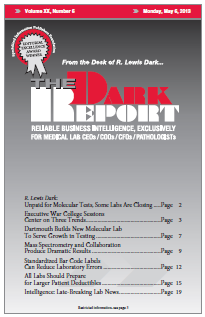CEO SUMMARY: When the Department of Pathology and Genomic Medicine at the Methodist Hospital in Houston, Texas, worked with the Pharmacy Services Department, the outcome was a dramatic reduction in the time needed to more accurately identify and treat the pathogens causing gram-negative bloodstream infections. This successful program reduced the average length of stay by …
Mass Spectrometry, Collaboration Produce Dramatic Results Read More »
To access this post, you must purchase The Dark Report.


